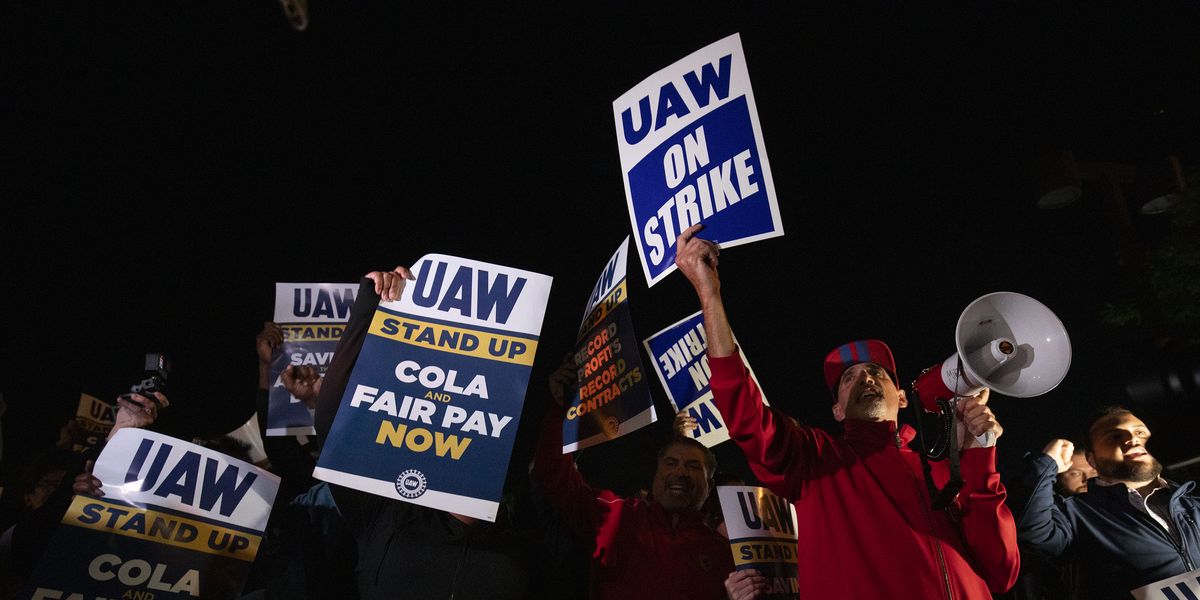UAW’s Second Stand-Up Strike Targets GM and Stellantis Parts Warehouses

- The United Auto Workers have expanded their strike targets to include 38 General Motors and Stellantis parts warehouses across the country.
- It was presumed the next union targets would be the pickup truck assembly plants, where much of the Detroit Three’s high-profit vehicles are built.
- Reports are that headway is being made in negotiations with Ford and GM, but that a wide gap still exists with Stellantis.
The UAW launched a stand-up strike on all of 38 General Motors and Stellantis parts warehouses in 20 states beginning noon Friday, “until those companies come to their senses and come to the table with a serious offer,” union President Shawn Fain said in a Facebook Live announcement. These new targets are designed to quickly affect current owners of GM and Stellantis (Chrysler/Jeep/Dodge/Ram) models who need parts and repair.
Earlier indications were that this second UAW stand-up strike would next affect assembly plants building the Detroit Three’s popular, high-profit full-size pickup trucks, including the Ford F-Series. But Fain described contract-talk progress with Ford Motor Company since the first stand-up strikes began a week earlier at the Bronco/Ranger plant in Michigan as well as GM’s Chevy Colorado/GMC Canyon plant in Kansas and Stellantis’ Jeep plant in Ohio.
All three of those plants remain on strike as GM and Stellantis parts warehouse workers join in.
“But to be clear, we are not done with Ford,” Fain said on Facebook Live. “At GM and Stellantis, it’s a different story.”
In the ongoing contract talks, Ford and GM have met the UAW’s demands on tiered wages, with Ford agreeing to place its Rawsonville components and Sterling Axle employees on the same wage grade as assembly workers, and GM agreeing to eliminate its entire wage tier for its Components Holding workers and its Customer Care and Aftersales employees.
Conversely, Stellantis has stood firm on “continued substandard pay at MOPAR,” Chrysler’s parts division, Fain said.
GM and Stellantis have not moved on any other major UAW issues, while Ford has agreed to the following UAW demands, according to Fain:
- Immediate conversion of all temporary employees with at least 90 days of employment upon contract ratification.
- An enhanced profit-sharing formula that would have resulted in a 13.3% increase in payments for the average employee had it been in place last year. Upon ratification, profit-sharing would be extended to temporary employees with at least 90 days employment.
- On the UAW proposal for the right to strike over plant closures, Ford has agreed to providing income security plus health care for two years in the event of an indefinite layoff, applying to all employees with at least 90 days of service, including temp workers.
- Ford has agreed to reinstate the cost of living adjustment (COLA) formula that Detroit automakers suspended in 2009.
The refusal by GM and Stellantis on this last point of negotiation is particularly contentious because the COLA formula was dropped in connection with the bankruptcies and federal government bailouts of GM and Chrysler that year. Fain said the “deficient COLA” of GM and Stellantis “will provide an estimated zero percent wage protection over the life of the agreement.”

Contributing Editor
As a kid growing up in Metro Milwaukee, Todd Lassa impressed childhood friends with his ability to identify cars on the street by year, make, and model. But when American automakers put an end to yearly sheetmetal changes, Lassa turned his attention toward underpowered British sports cars with built-in oil leaks. After a varied early journalism career, he joined Autoweek, then worked in Motor Trend’s and Automobile’s Detroit bureaus, before escaping for Mountain Maryland with his wife, three dogs, three sports cars (only one of them British), and three bicycles. Lassa is founding editor of thehustings.news, which has nothing to do with cars.


















